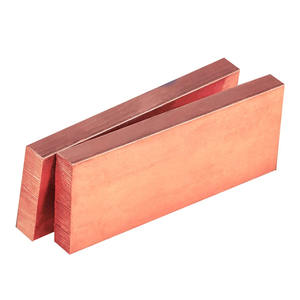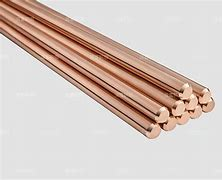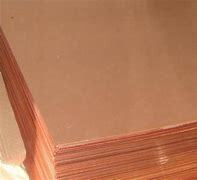1. Introduction
Stripping copper wire for scrap is a common task for DIY recyclers, electricians, and metal collectors. Clean, bare copper fetches a much higher price than insulated wire. But doing it the wrong way—like burning copper wire for scrap—can be dangerous, illegal, or even reduce your payout.

In this guide, you’ll learn the best way to strip copper wire, how to identify valuable copper types (including copper rod, copper strip, and copper tubing), and what to avoid. Whether you’re stripping wire for recycling or salvaging copper for resale, these steps will help you work smarter and safer.
2. Why Strip Copper Wire?
Scrap yards pay significantly more for bare bright copper than for insulated wire. Clean copper—like copper strip wire, copper rod, or stripped copper cable—can be melted down or reused directly in manufacturing.
Additionally, many recyclers won’t accept burnt or contaminated copper. Burning copper wire for scrap releases toxic fumes and damages the metal’s surface, lowering its grade and value. Stripping properly ensures you get top dollar for your effort.
3. Tools You’ll Need
- Wire strippers (manual or automatic)
- Utility knife (for thicker cables)
- Rotary wire stripper or benchtop stripper (for high-volume work)
- Safety gloves and eye protection
- Bucket or container for sorted copper
For large-scale operations, consider investing in a motorized copper wire stripper—it’s the fast way to strip copper wire without fatigue or inconsistent cuts.
4. Step-by-Step: How to Strip Copper Wire Safely
4.1. Sort Your Wire First
Separate your copper wire by type: THHN, Romex, coaxial, or appliance wire. Look for markings like ‘CU’ or ‘Copper.’ Avoid aluminum or copper-clad wires unless you’re sure they’re worth processing.

Also, identify any copper components like copper strip, copper rod for welding, or copper tubing from old AC units (aircon copper pipe is especially valuable).
4.2. Choose the Right Stripping Method
For thin wires (14–18 AWG): Use manual wire strippers. Adjust the gauge setting, clamp gently, and pull the insulation off.
For thick cables (like 6 AWG or larger): Score the insulation with a utility knife, then twist and peel it back. Never cut into the copper—this reduces weight and value.
For long runs or bulk wire: Use an automatic wire stripper. Feed the wire through, and it cleanly removes insulation in seconds—the best way to strip long copper wire efficiently.
4.3. Avoid Common Mistakes
Never burn insulation off. Burning copper wire for scrap is illegal in many areas and produces harmful dioxins. It also oxidizes the copper, turning it into a lower-grade scrap.
Don’t mix copper types. Keep bare bright copper separate from copper alloy strip, beryllium copper strip, or nickel plated copper strip—they have different scrap values.
5. Identifying Valuable Copper Items Beyond Wire
While stripping wire, you might come across other high-value copper items:

- Copper rod: Used in welding or earthing. Look for copper welding rod, copper brazing rod, or copper earth rod.
- Copper strip: Flat pieces like 1mm copper strip, copper earth strip 25x3mm, or copper edging strip. These are often found in electrical panels or grounding systems.
- Copper tubing: From old AC units—aircon copper tube or 15mm copper pipe can be worth a lot. Check ac copper pipe price trends before selling.
- Copper bars: Including copper round bar, flexible copper bus bar, or copper flat bar. These are common in industrial equipment.
Note: Copper bonded ground rod or copper clad steel earth rod contains less pure copper and is worth less than solid copper items.
6. Maximizing Your Scrap Value
Clean your copper thoroughly. Remove tape, labels, or solder residue. Dirty copper may be downgraded.
Weigh your copper accurately. Prices fluctuate—check current copper rod price, copper strip price, or 1oz copper price before heading to the scrap yard.
Call ahead. Ask if they accept copper strip near me, copper tubing, or copper bars for sale. Some yards specialize in certain types.
Store copper dry. Moisture causes oxidation, which can downgrade bright copper to #2 copper, lowering your payout.
7. Safety Tips
Always wear cut-resistant gloves when using knives or strippers.
Work in a well-ventilated area—especially if dealing with older wires that may contain lead or asbestos insulation.
Keep stripped copper away from moisture and contaminants to preserve its grade.
8. Conclusion
Stripping copper wire for scrap doesn’t have to be tedious or risky. With the right tools and techniques, you can efficiently recover clean, high-value copper—including copper strip, copper rod, and copper tubing—while staying safe and compliant.
Remember: the best way to strip copper cable is mechanically, not by burning. By sorting carefully, avoiding contamination, and knowing what’s valuable (like copper to copper welding rod or copper bonded earthing rod), you’ll maximize both your earnings and your impact on sustainable recycling.
Our Website founded on October 17, 2012, is a high-tech enterprise committed to the research and development, production, processing, sales and technical services of ceramic relative materials such as How. Our products includes but not limited to Boron Carbide Ceramic Products, Boron Nitride Ceramic Products, Silicon Carbide Ceramic Products, Silicon Nitride Ceramic Products, Zirconium Dioxide Ceramic Products, etc. If you are interested, please feel free to contact us.

